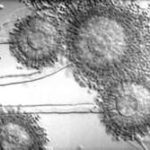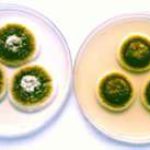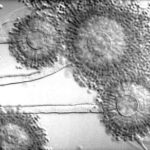Date: 26 November 2013
Copyright: n/a
Notes: n/a
Images library
-
Title
Legend
-
Microbroth dilution of A.fumigatus against itraconazole. The rows at the top show complete inhibition (susceptible) and the centre row shows no inhibition at all (resistant). An MIC of 4 mg/l (2 clear wells to the right) is shown for the bottom row (susceptible).
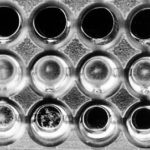
-
Itraconazole standards are placed in duplicate in a pre-arranged order and distributed throughout the plate. Patient samples of serum or plasma are placed in duplicate in other wells. A standard curve is drawn using the measured diameters of the standards and the patients’ samples then determined. The bioassay measures both itraconazole and the major bioactive metabolite of itraconazole – hydroxitraconazole.
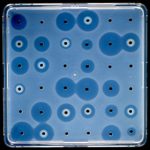
-
This image shows the next three concentrations of 8, 16 and 32 mg/l. AF72 is inhibited by 16 mg/l of amphotericin B, but not at any concentration of itraconazole.
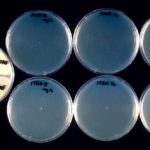
-
This image shows the next three concentrations of drugs – 1, 2 and 4 mg/l. Isolates AF6, AF10, AF19 and AF20 are inhibited at 2 mg/l and AF 11 at 4 mg/l amphotericin B
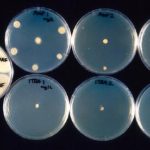
-
Six isolates of A.fumigatus, of which one (AF72) is documented to be itraconazole resistant. On the left is the control plate, showing good growth at 48 hr on Sabouraud dextrose agar. The next three pairs of plates contain increasing and equal concentrations of amphotericin B (top row) and itraconazole (bottom row). AF72 is a slowly growing isolate that is not inhibited by any concentration of either drug, AF11 is fully susceptible to itraconazole (
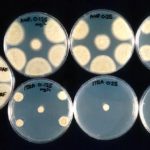
-
Nasal, sinus and orbital aspergillosis in a cat. The left nasal cavity and sinus were full of pus and debris and there was severe bone erosion from the nasal cavity into the rostromedial orbitthrough which pus was protruding



